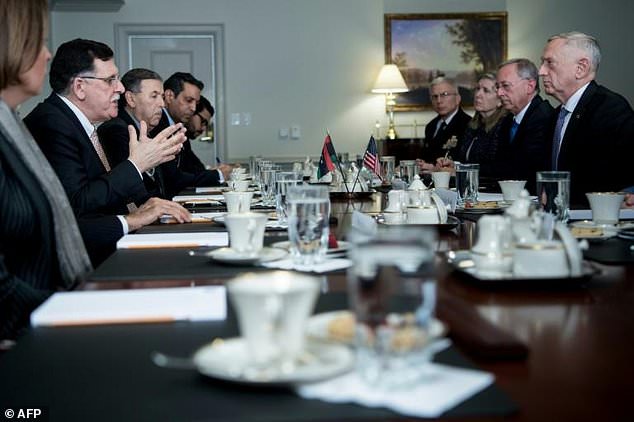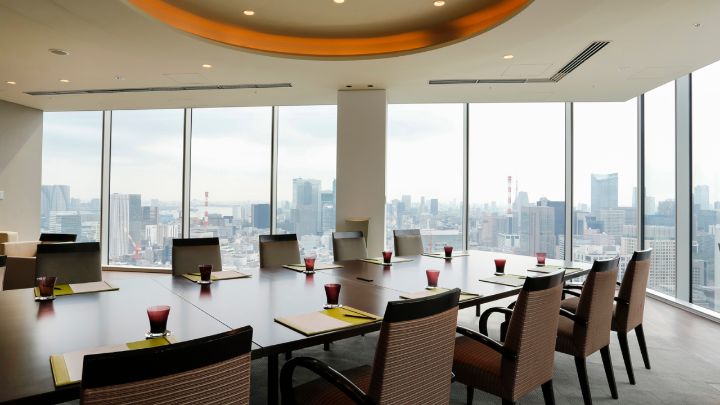Ben Carson really is a fool.
Carson has $31K dining set in his office, paid for by taxpayers
The Department of Housing and Urban Development used $31,000 to purchase a custom hardwood table, chairs and a hutch for Secretary Ben Carson’s office late last year, the
New York Times reports.
The agency didn't seek congressional approval for the purchase, even though federal law mandates authorization from lawmakers to "furnish or redecorate the office of a department head” if the total cost is over $5,000, per the Times.
- What they're saying: A HUD spokesman told the Times that Carson “didn’t know the table had been purchased” but doesn't think it's overly expensive and has no plans to return it, the Times said.
- Why it matters: Carson is also facing scrutiny and a probe by his agency’s inspector general into his son’s involvement in an agency-sponsored listening tour in Baltimore last year. Attorneys at the agency had reportedly warned both that it could be conflict of interest.
You know, for all the griping about Carson's damn table, chairs and hutch, one'd think the NYT would include a photo of them or the room so folks would have some perspective on what was bought and replaced and what the room really is.
The "net net" of the story is that part of it strikes me as "so what, but maybe there's some 'there' there," and part of it strikes me as "there's clear law breaking there."
The Department of Housing and Urban Development used $31,000 to purchase a custom hardwood table, chairs and a hutch for Secretary Ben Carson’s office late last year, the
New York Times reports.
I really don't care that HUD spent that much for a dining table, chairs, and server/hutch. It's for the HUD secretary's executive dining room. $31K isn't at all unreasonable. What I think is that most folks haven't the first idea of what an executive dining room is, and the NYT and others are availing themselves of the average person's ignorance about what an executive dining room actually is.
What an executive dining room is not is merely a place to eat. Indeed, eating often enough is the least of what goes on in an executive dining room. Such places, regardless of the "dining room" part of the description, are just conference rooms that have water hookups, munchies, china, soft drinks, etc. stored in a hutch that's long/large enough for food and drinks to be placed in a buffet fashion.
This is James Mattis' executive dining room. It looks like it might be a 14-person table.
Here are some others.
I don't know if any of you have ever purchased a table that seats 20 people. Let me tell you. They ain't cheap, and if they happen to be equipped with electronic hookups and gizmos, they're even less cheap. I suspect the table in Carson's exec dining room is one of those "21st century" type tables similar to the one's pictured above, and I think that because the NYT describes it as a custom hardwood table. That's exactly what they are: buyers can specify the materials, features and dimensions, and the tables often enough are made from hardwood. If Carson's table is even roughly like the "tech enabled" tables above, it's easily a $10K table, and that's if it's hardwood veneers over pressboard.
Then there're the chairs. I don't know how many people the table seats, but having furnished the offices of my old firm, I know damn well what office chairs cost. Basic ergonomic office chairs are pricey --
Modern Office Chairs - Herman Miller Official Store -- or at least pricier than I suspect the "average person" thinks they are. Put 14 to 20 of those suckers around a table and it's very possible, depending on the table, that the chairs together cost more than the table.
As for the hutch, well, the second and last two generic photos above have hutches in them. If you've remodeled a kitchen, you know that cabinets are the single priciest part of doing so. It's no different anywhere else.
So just ballparking some numbers in my head...
- Table: $10,000
- Charis $15,000
- Hutch: $3,000
...$31,000 doesn't strike me as outlandish for a table, chairs and hutch in an executive dining room that is really just the senior-most executive's dedicated conference room....though in the case of departmental secretaries, it's quite likely a room shared -- for work and personal uses -- with the Secretary's direct reports.
The reality of life for principals and the people who work directly for and with them is that rarely does eating lunch (and often enough breakfast and dinner) consist of just eating and making idle, non-work-related chit chat. Quite often too, the execs' administrative assistants and other senior level staff will take their lunches in that room, host office gatherings (birthday, wedding, promotion, interviews, etc.), conduct working sessions, etc. when the Secretary is out of the office or has no meeting scheduled.
The agency didn't seek congressional approval for the purchase, even though federal law mandates authorization from lawmakers to "furnish or redecorate the office of a department head” if the total cost is over $5,000, per the Times.
Unauthorized encumbering/spending, unlike the furniture cost itself and that the HUD Secy's exec dining room furniture was replaced, is something I find problematic. While I think the sum of $5K being the threshold for requiring a Congressional appropriation to replace furniture and fixtures, the fact of the matter is that $5K is the threshold; thus Carson (his staff) should have complied with it and requested the appropriation for the purchases.
Because Carson didn't obtain the appropriation for the furniture, what happened -- because it's the only way it could have happened if taxpayer money paid for the furniture -- is that money expressly appropriated for something other than furniture and fixtures in Carson's office was used to buy the table, chairs and cabinet. Now I have no idea from what appropriation the funding was taken, but I know that's what had to happen.
Failing to comply with a very simple and straightforward law such as the one re: furniture and fixture replacement appropriations is emblematic of what happens when people who don't know what they're doing are put in decision making positions.
I don't know who made the decision to order the furniture and fixtures; I don't even care who did. Whoever it is does not know what they're doing and, assuming they didn't willfully disregard the law, they didn't check before taking action and binding the government. People who handle their jobs/duties so perfunctorily don't deserve to hold them. Ditto for people who had no better judgment than to hire such employees.
No appointed officials absolutely have to have prior government experience. Every appointed official must, however, exhibit the due diligence that comes with whatever level of experience they have. And that means the less experience one has, the more circumspection one is obliged to exhibit. And let's be honest. It doesn't take much circumspection at all to simply check the HUD procurement guidelines and follow them so as not to break the law. "You can't spend more than $5K" isn't a difficult or complex guideline/law to understand and follow. Of course, if my experiences here and what I've seen in the news about Trump, reading is not fundamental among Republicans.






